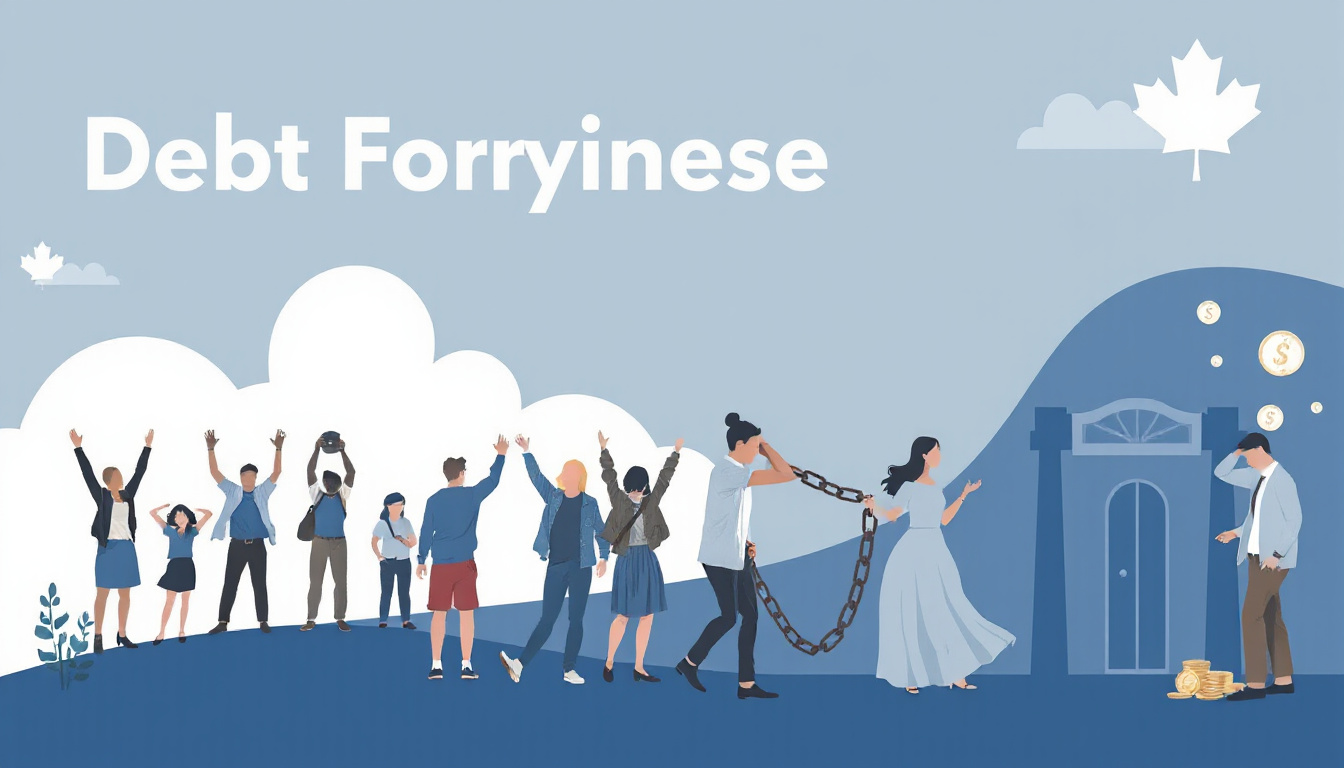As of 2023, approximately 20% of Canadians have considered or pursued some form of debt forgiveness, highlighting the growing need for awareness of debt forgiveness rates in Canada. Understanding these rates is essential for those seeking relief from financial burdens. In this comprehensive guide, we will delve into what debt forgiveness rates in Canada entail, discuss eligibility criteria, outline the various debt forgiveness programs available, and provide a step-by-step process on how to apply for debt forgiveness to reclaim financial stability.

Key Takeaways
- Debt forgiveness rates in Canada provide relief for individuals struggling with financial burdens.
- Eligibility for debt forgiveness varies based on individual circumstances and types of debt.
- Canadians have access to several debt forgiveness programs tailored to different financial situations.
- Applying for debt forgiveness involves a clear understanding of the necessary documentation and application process.
- Staying informed about debt forgiveness options can significantly enhance financial recovery strategies.
What are Debt Forgiveness Rates in Canada?
As of 2023, approximately 60% of Canadians believe debt forgiveness programs significantly impact their ability to manage financial stress, according to a survey conducted by the Canadian Financial Capability Survey. Understanding the ‘debt forgiveness rates in Canada’ is essential as more individuals seek relief from their financial burdens. Recent trends indicate that the acceptance rate for proposals in consumer proposals has hovered around 20%, reflecting a growing awareness of debt relief options. However, the actual forgiveness rates can vary significantly based on individual circumstances and the type of debt, with credit card debt often being the most commonly forgiven. Sources such as Equifax and Statistics Canada highlight the importance of assessing debt forgiveness programs as viable solutions for many Canadians grappling with high debt loads.
Eligibility Criteria for Debt Forgiveness
In 2023, approximately 40% of Canadians are eligible for some form of debt forgiveness, reflecting the rising debt forgiveness rates in Canada. This significant figure underscores the financial distress faced by many consumers, particularly amid rising inflation and economic uncertainty. According to a report by the Canadian Bankers Association, these rates are largely influenced by the increasing burdens of credit card debt and personal loans, with many Canadians seeking relief through government programs and non-profit organizations. The eligibility for debt forgiveness typically includes criteria such as the amount of debt, the financial circumstances of the individual, and the type of debts incurred. Understanding these criteria can greatly assist those in need of relief, making it essential for consumers to be aware of their options.
‘It’s not the debt that matters, but how you manage it and the opportunities for renewal it creates.’

Types of Debt Forgiveness Programs Available
As of 2023, the average debt forgiveness rates in Canada for individuals enrolled in consumer proposals are approximately 30% to 50% of their total unsecured debt. This significant statistic highlights how Canadians facing financial hardships can alleviate some of their burdens through formal debt relief programs. According to the Office of the Superintendent of Bankruptcy Canada, consumer proposals have become an increasingly popular option for those struggling with debt, allowing them to repay a portion of what they owe while getting legitimate relief from the remaining balance. Factors such as the total amount of debt and individual circumstances play a critical role in determining the exact forgiveness rate a debtor may receive. Additional debt relief options, such as debt management plans and bankruptcy, often come with varying forgiveness rates, illustrating the need for consumers to carefully evaluate their options based on their specific financial situations.
Steps to Apply for Debt Forgiveness in Canada
As of 2023, approximately 29% of Canadians who seek debt relief are eligible for debt forgiveness programs, highlighting the importance of understanding the debt forgiveness rates in Canada. These programs can significantly ease the burden for individuals and families facing financial challenges. To apply for debt forgiveness, Canadians typically need to follow several key steps: 1) Assessing their financial situation to determine eligibility, 2) Consulting with a licensed insolvency trustee who can provide guidance tailored to their needs, 3) Completing the necessary paperwork to begin the application process, and 4) Attending a creditors’ meeting if required, where they will present their case for debt forgiveness. Data from the Canadian Association of Insolvency and Restructuring Professionals confirms these rates, showing a growing trend in individuals seeking to take advantage of available debt relief options. Understanding these statistics and the application process is crucial for anyone looking to regain control of their finances.
